Überblick über die Metallschmelze (MMD - Molten Metal Deposition)
Abscheidung von geschmolzenem Metall (MMD) ist eine hochmoderne additive Fertigungstechnik, mit der komplizierte und leistungsstarke Metallteile hergestellt werden können. Bei diesem Verfahren werden Schichten aus geschmolzenem Metall aufgetragen, um ein Bauteil von Grund auf aufzubauen, das eine unvergleichliche Präzision und Festigkeit aufweist. MMD wird besonders in Branchen wie der Luft- und Raumfahrt, der Automobilindustrie und der Medizintechnik geschätzt, wo die Nachfrage nach komplexen und robusten Komponenten ständig steigt.
In diesem Leitfaden gehen wir auf die Besonderheiten von MMD ein, einschließlich der Arten der verwendeten Metallpulver, ihrer Eigenschaften, Anwendungen und mehr. Am Ende werden Sie ein umfassendes Verständnis dafür haben, warum MMD die Fertigung revolutioniert und wie es in verschiedenen Branchen eingesetzt werden kann.
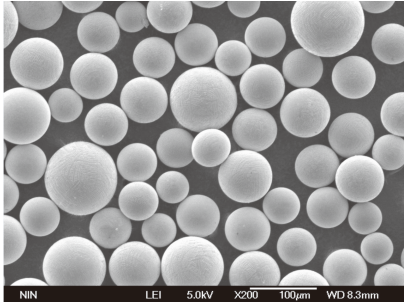
Arten von Metallpulvern, die bei MMD verwendet werden
Die Kenntnis der verschiedenen Metallpulver, die in MMD verwendet werden, ist entscheidend für die Auswahl des richtigen Materials für bestimmte Anwendungen. Nachfolgend finden Sie einen detaillierten Überblick über zehn spezifische Metallpulvermodelle, die üblicherweise in MMD verwendet werden, sowie über ihre Zusammensetzung und Eigenschaften.
| Metallpulver-Modell | Zusammensetzung | Eigenschaften | Merkmale |
|---|---|---|---|
| Titanium Ti-6Al-4V | 90% Titan, 6% Aluminium, 4% Vanadium | Hohe Festigkeit im Verhältnis zum Gewicht, Korrosionsbeständigkeit | Weit verbreitet in der Luft- und Raumfahrt, biokompatibel für medizinische Implantate |
| Rostfreier Stahl 316L | Eisen, Chrom, Nickel, Molybdän | Ausgezeichnete Korrosionsbeständigkeit, hohe Zähigkeit | Ideal für maritime und medizinische Anwendungen |
| Aluminium AlSi10Mg | Aluminium, Silizium, Magnesium | Leichtes Gewicht, gute thermische Eigenschaften | Geeignet für Automobil- und Luft- und Raumfahrtkomponenten |
| Inconel 718 | Nickel, Chrom, Eisen, Niobium | Hochtemperaturbeständigkeit, gute Oxidationsbeständigkeit | Verwendung in Gasturbinen und Raketentriebwerken |
| Kobalt-Chrom | Kobalt, Chrom | Hohe Verschleiß- und Korrosionsbeständigkeit, biokompatibel | Häufig bei zahnmedizinischen und orthopädischen Implantaten |
| Werkzeugstahl H13 | Eisen, Chrom, Molybdän, Vanadium | Hohe Härte und Zähigkeit | Verwendung in Formen und Gesenken für das Kunststoffspritzgießen |
| Kupfer CuNi2SiCr | Kupfer, Nickel, Silizium, Chrom | Hohe thermische und elektrische Leitfähigkeit | Verwendung in elektrischen Komponenten und Wärmetauschern |
| Martensitaushärtender Stahl (1.2709) | Eisen, Nickel, Kobalt, Molybdän | Ultrahohe Festigkeit, gute Zähigkeit | Einsatz in Werkzeugen und Hochleistungsteilen |
| Nickellegierung 625 | Nickel, Chrom, Molybdän, Niob | Ausgezeichnete Korrosions- und Oxidationsbeständigkeit | Ideal für die Schifffahrt und die chemische Verarbeitung |
| Bronze CuSn10 | Kupfer, Zinn | Gute Verschleißfestigkeit, leicht zu gießen | Verwendung in Lagern, Buchsen und künstlerischen Skulpturen |
Anwendungen von Abscheidung von geschmolzenem Metall (MMD)
MMD’s Vielseitigkeit macht es geeignet für eine breite Palette von Anwendungen. In der folgenden Tabelle sind die verschiedenen Anwendungen von MMD in unterschiedlichen Branchen zusammengefasst.
| Industrie | Anwendungen | Vorteile |
|---|---|---|
| Luft- und Raumfahrt | Motorkomponenten, Strukturteile | Leichtes Gewicht, hohe Festigkeit, komplexe Geometrien |
| Automobilindustrie | Motorteile, Fahrwerkskomponenten | Verbesserte Leistung, geringeres Gewicht, kundenspezifische Designs |
| Medizinische | Implantate, chirurgische Instrumente | Biokompatibilität, individuelle Anpassung, schnelle Prototypenerstellung |
| Marine | Propeller, Strukturteile | Korrosionsbeständigkeit, Langlebigkeit |
| Energie | Turbinenschaufeln, Wärmetauscher | Hochtemperaturbeständigkeit, Effizienz |
| Elektronik | Steckverbinder, Kühlkörper | Hohe Leitfähigkeit, Präzision |
| Werkzeugbau | Gussformen, Matrizen | Hohe Festigkeit, Verschleißfestigkeit, Präzision |
| Kunst und Schmuck | Skulpturen, individueller Schmuck | Aufwändige Designs, Materialvielfalt |
| Industrielle Ausrüstung | Maschinenkomponenten, Zahnräder | Langlebigkeit, Stärke, individuelle Lösungen |
| Bauwesen | Strukturelle Elemente, Verbindungselemente | Festigkeit, Korrosionsbeständigkeit, komplexe Formen |
Spezifikationen, Größen, Güteklassen und Normen
Um Konsistenz und Qualität bei MMD zu gewährleisten, werden bestimmte Normen, Größen und Qualitäten eingehalten. Die nachstehende Tabelle gibt einen Überblick über diese Spezifikationen.
| Material | Spezifikationen | Größen (mm) | Klassen | Normen |
|---|---|---|---|---|
| Titanium Ti-6Al-4V | ASTM B348, AMS 4911 | 1-50 | Klasse 5 | ASTM, AMS, ISO |
| Rostfreier Stahl 316L | ASTM A240, AMS 5507 | 0.5-100 | Güteklasse 316L | ASTM, AMS, ISO |
| Aluminium AlSi10Mg | EN 1706, ISO 3522 | 0.5-50 | AlSi10Mg | EN, ISO |
| Inconel 718 | AMS 5662, ASTM B637 | 1-50 | UNS N07718 | AMS, ASTM |
| Kobalt-Chrom | ASTM F75, ISO 5832-4 | 1-20 | CoCrMo | ASTM, ISO |
| Werkzeugstahl H13 | ASTM A681, SAE J437 | 1-100 | H13 | ASTM, SAE |
| Kupfer CuNi2SiCr | DIN 17670, ASTM B505 | 0.5-100 | CuNi2SiCr | DIN, ASTM |
| Martensitaushärtender Stahl (1.2709) | AMS 6514, DIN 1.2709 | 1-50 | Klasse 300 | AMS, DIN |
| Nickellegierung 625 | AMS 5599, ASTM B443 | 1-50 | UNS N06625 | AMS, ASTM |
| Bronze CuSn10 | ASTM B505, SAE J461 | 1-100 | CuSn10 | ASTM, SAE |
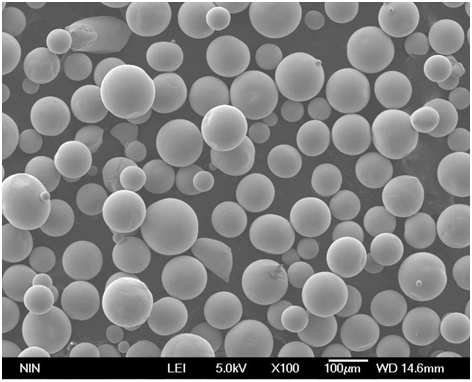
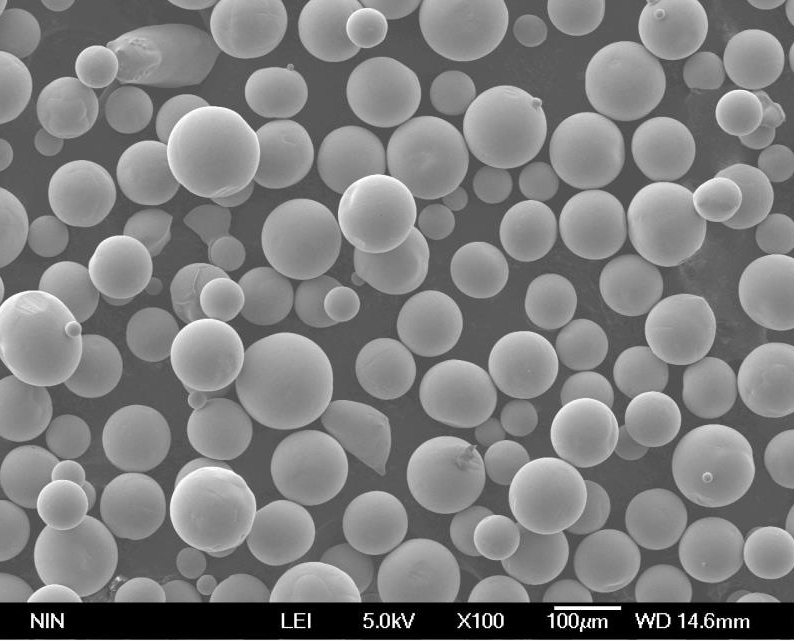

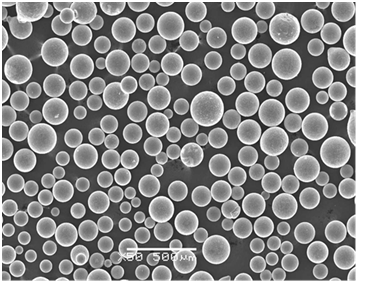
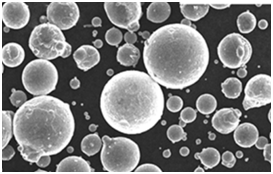

Lieferanten und Preisangaben
Für die Budgetierung und Planung im MMD ist es wichtig zu wissen, woher man Metallpulver beziehen kann und was sie kosten. Hier finden Sie eine Tabelle mit Einzelheiten zu Lieferanten und Preisen.
| Anbieter | Standort | Verfügbare Materialien | Preisgestaltung (USD/kg) |
|---|---|---|---|
| EOS GmbH | Deutschland | Ti-6Al-4V, 316L, AlSi10Mg, Inconel 718 | 150-400 |
| Tischlertechnik | USA | Kobalt-Chrom, H13, Maraging-Stahl | 200-500 |
| Sandvik | Schweden | 316L, CuNi2SiCr, Inconel 625 | 100-300 |
| AP&C | Kanada | Ti-6Al-4V, 316L, AlSi10Mg | 180-350 |
| GKN Hoeganaes | USA | Bronze CuSn10, 316L, Maraging-Stahl | 120-400 |
| Praxair | USA | Ti-6Al-4V, 316L, Inconel 718, CuNi2SiCr | 200-450 |
| Hoganas AB | Schweden | Rostfreie Stähle, Werkzeugstähle, Bronzen | 150-400 |
| LPW-Technologie | UK | 316L, AlSi10Mg, Inconel 625 | 180-360 |
| Arcam AB | Schweden | Ti-6Al-4V, CoCrMo, Inconel 718 | 250-500 |
| Tekna Plasma-Anlagen | Kanada | 316L, Ti-6Al-4V, Inconel 718 | 200-450 |
Vorteile und Beschränkungen von MMD
Jede Technologie hat ihre Vor- und Nachteile. Hier finden Sie einen detaillierten Vergleich der Vorteile und Grenzen von MMD.
| Aspekt | Vorteile | Beschränkungen |
|---|---|---|
| Präzision | Hohe Genauigkeit bei der Erstellung komplexer Geometrien | Erfordert präzise Kontrolle und Kalibrierung |
| Materialeigenschaften | Ausgezeichnete mechanische Eigenschaften und Leistung | Beschränkt auf bestimmte Metalle und Legierungen |
| Personalisierung | Hochgradig anpassbare Designs | Die Komplexität des Designs kann Kosten und Zeitaufwand erhöhen |
| Geschwindigkeit | Schnellere Produktion für kleine bis mittlere Chargen | Langsamer für die Großserienproduktion |
| Kosten | Reduzierter Materialabfall, kosteneffizient für Prototypen | Hohe Anfangsinvestitionen in die Ausrüstung |
| Stärke und Langlebigkeit | Produziert starke, langlebige Teile | Einige Materialien müssen möglicherweise nachbearbeitet werden |
| Nachhaltigkeit | Minimaler Abfall, wiederverwertbare Materialien | Energieintensiver Prozess |
| Vielseitigkeit | Breite Palette von Anwendungen in verschiedenen Branchen | Nicht für alle Arten von Bauteilen geeignet |
| Integration | Kann in andere Fertigungsprozesse integriert werden | Erfordert spezielle Kenntnisse und Fähigkeiten |
| Innovation | Ermöglicht innovative Designs und schnelles Prototyping | Begrenzt durch den derzeitigen technologischen Fortschritt |
Hauptmerkmale von Abscheidung von geschmolzenem Metall (MMD)
Lassen Sie uns die Hauptmerkmale von MMD untersuchen, die es zu einem einzigartigen und wertvollen Herstellungsprozess machen.
Präzision und Genauigkeit
Eines der herausragenden Merkmale von MMD ist seine Präzision. Durch das schichtweise Auftragen von geschmolzenem Metall können mit MMD komplizierte Details erzielt werden, die bei herkömmlichen Verfahren möglicherweise übersehen werden. Dieses hohe Maß an Genauigkeit ist für Branchen unerlässlich, in denen selbst die kleinste Abweichung zu erheblichen Problemen führen kann, wie z. B. in der Luft- und Raumfahrt oder bei medizinischen Anwendungen.
Material Vielseitigkeit
MMD ist mit einer Vielzahl von Metallen und Legierungen kompatibel, die jeweils einzigartige Eigenschaften aufweisen. Ob das hohe Festigkeits-/Gewichtsverhältnis von Titan oder die hervorragende Korrosionsbeständigkeit von Edelstahl - MMD kann die unterschiedlichsten Anforderungen erfüllen und ist damit ein äußerst vielseitiges Fertigungsverfahren.
Stärke und Langlebigkeit
Die von MMD hergestellten Komponenten sind für ihre hohe Festigkeit und Haltbarkeit bekannt. Dies ist besonders vorteilhaft in Branchen wie der Automobilindustrie und der Luft- und Raumfahrt, wo die Teile extremen Bedingungen ausgesetzt sind und ihre Unversehrtheit über lange Zeit erhalten bleiben muss.
Anpassungsfähigkeit und Flexibilität
MMD ermöglicht eine umfangreiche Anpassung, so dass die Hersteller Teile herstellen können, die auf spezifische Anforderungen zugeschnitten sind. Diese Flexibilität ist von unschätzbarem Wert für Anwendungen, bei denen maßgeschneiderte Lösungen erforderlich sind, wie z. B. bei medizinischen Implantaten oder speziellen Komponenten für die Luft- und Raumfahrt.
Effizienz und Nachhaltigkeit
MMD ist ein effizientes Verfahren, das den Abfall minimiert, da nur das für die Herstellung des Teils benötigte Material verwendet wird. Außerdem sind viele der beim MMD-Verfahren verwendeten Materialien recycelbar, was zur Nachhaltigkeit des Herstellungsprozesses beiträgt.
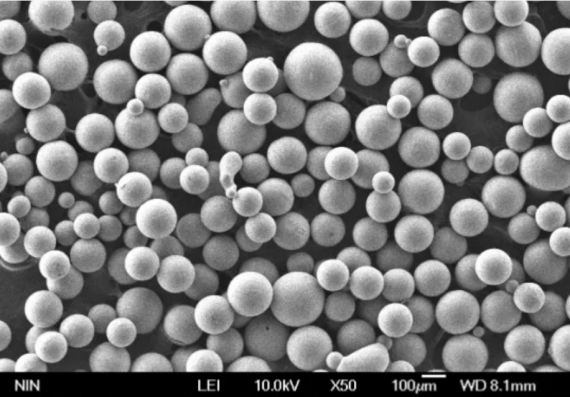
FAQ
Was ist Schmelzmetallabscheidung (MMD)?
F: Was genau ist Molten Metal Deposition (MMD)?
A: Molten Metal Deposition (MMD) ist ein additives Fertigungsverfahren, bei dem Metallteile Schicht für Schicht aus geschmolzenem Metall aufgebaut werden. Es ermöglicht präzise, komplexe Geometrien und Hochleistungsbauteile.
Wie schneidet MMD im Vergleich zu anderen additiven Fertigungsverfahren ab?
F: Wie unterscheidet sich MMD von anderen 3D-Druckverfahren?
A: Im Gegensatz zu anderen additiven Fertigungsverfahren, bei denen Kunststoff oder Harz verwendet wird, kommt bei MMD Metall zum Einsatz, das eine höhere Festigkeit und Haltbarkeit aufweist. Es ist besonders nützlich für Anwendungen, die leistungsstarke Metallteile erfordern.
Welche Materialien können in MMD verwendet werden?
F: Welche Arten von Metallen und Legierungen werden üblicherweise für MMD verwendet?
A: Zu den gängigen Metallen, die für MMD verwendet werden, gehören unter anderem Titan Ti-6Al-4V, Edelstahl 316L, Aluminium AlSi10Mg, Inconel 718 und Kobalt-Chrom. Jedes Material bietet einzigartige Eigenschaften, die für unterschiedliche Anwendungen geeignet sind.
Was sind die Vorteile des MMD?
F: Warum sollte ich MMD für die Fertigung in Betracht ziehen?
A: MMD bietet hohe Präzision, hervorragende Materialeigenschaften, Anpassungsfähigkeit, Effizienz und Nachhaltigkeit. Es ist besonders vorteilhaft für die Herstellung komplexer und leistungsstarker Teile.
Gibt es irgendwelche Einschränkungen für MMD?
F: Was sind die Nachteile oder Einschränkungen von MMD?
A: MMD ist zwar äußerst vielseitig und präzise, aber die Einrichtung kann teuer sein und erfordert spezielle Kenntnisse. Außerdem ist es möglicherweise nicht für alle Arten von Bauteilen geeignet, und einige Materialien müssen möglicherweise nachbearbeitet werden.
Wie kann ich mit MMD beginnen?
F: Was benötige ich, um MMD für meine Projekte zu nutzen?
A: Um mit MMD beginnen zu können, benötigen Sie Zugang zu einer MMD-Maschine, die entsprechenden Metallpulver und Kenntnisse über das Verfahren. Die Zusammenarbeit mit erfahrenen Lieferanten und Herstellern kann ebenfalls dazu beitragen, die Einführung von MMD zu rationalisieren.
Wo kann ich Metallpulver für MMD beziehen?
F: Wo kann ich Metallpulver für MMD kaufen, und was sollte ich beachten?
A: Metallpulver für MMD können von Lieferanten wie EOS GmbH, Carpenter Technology und Sandvik bezogen werden. Berücksichtigen Sie bei Ihrer Wahl Faktoren wie Materialeigenschaften, Kosten und Zuverlässigkeit des Lieferanten.

